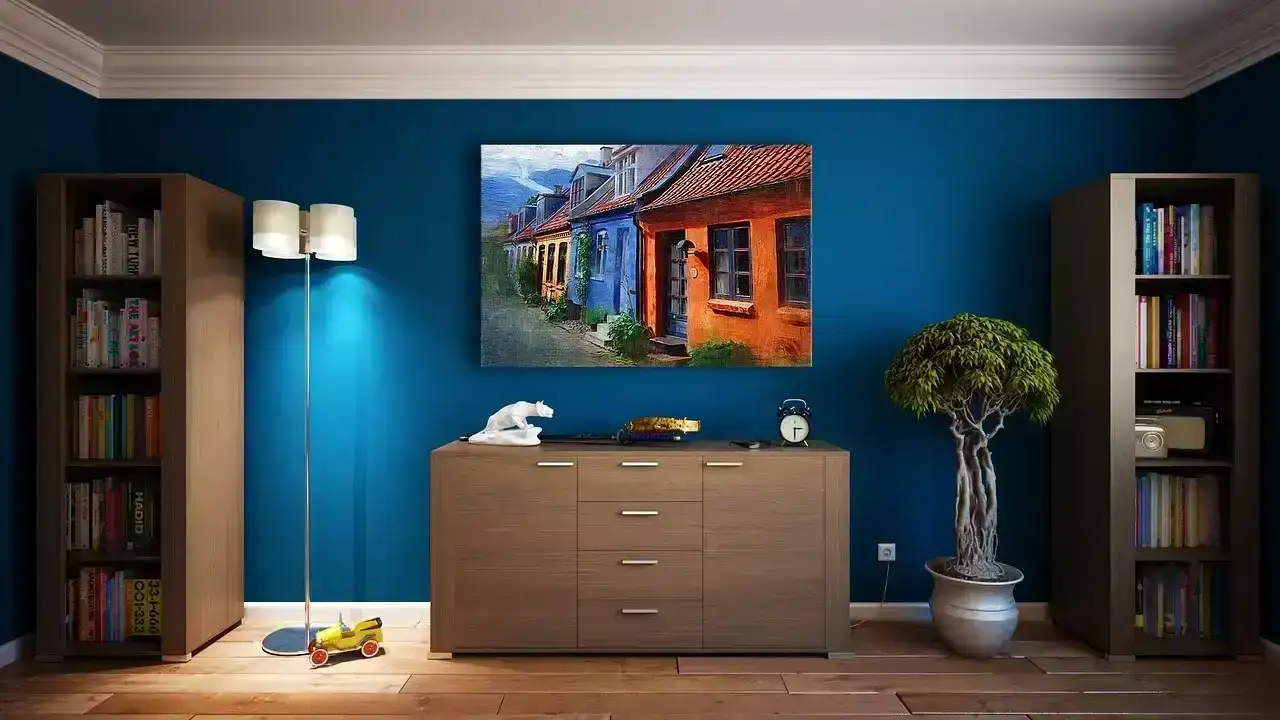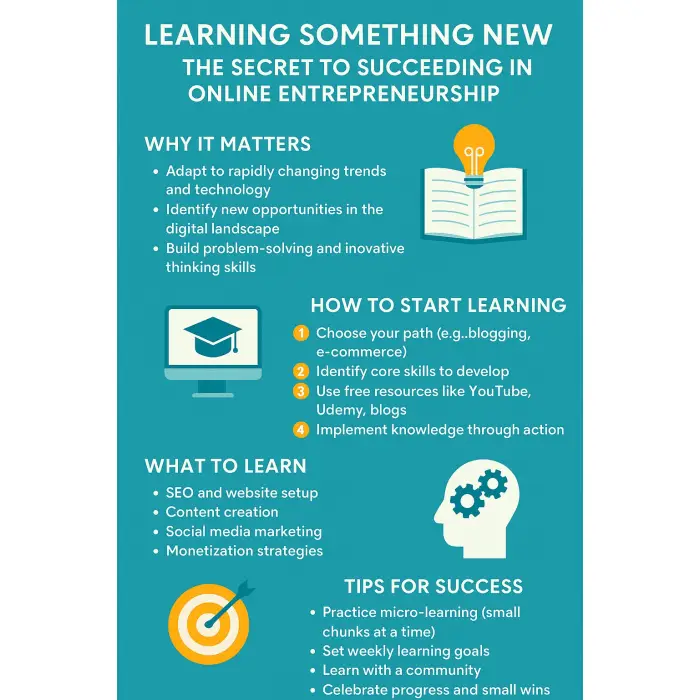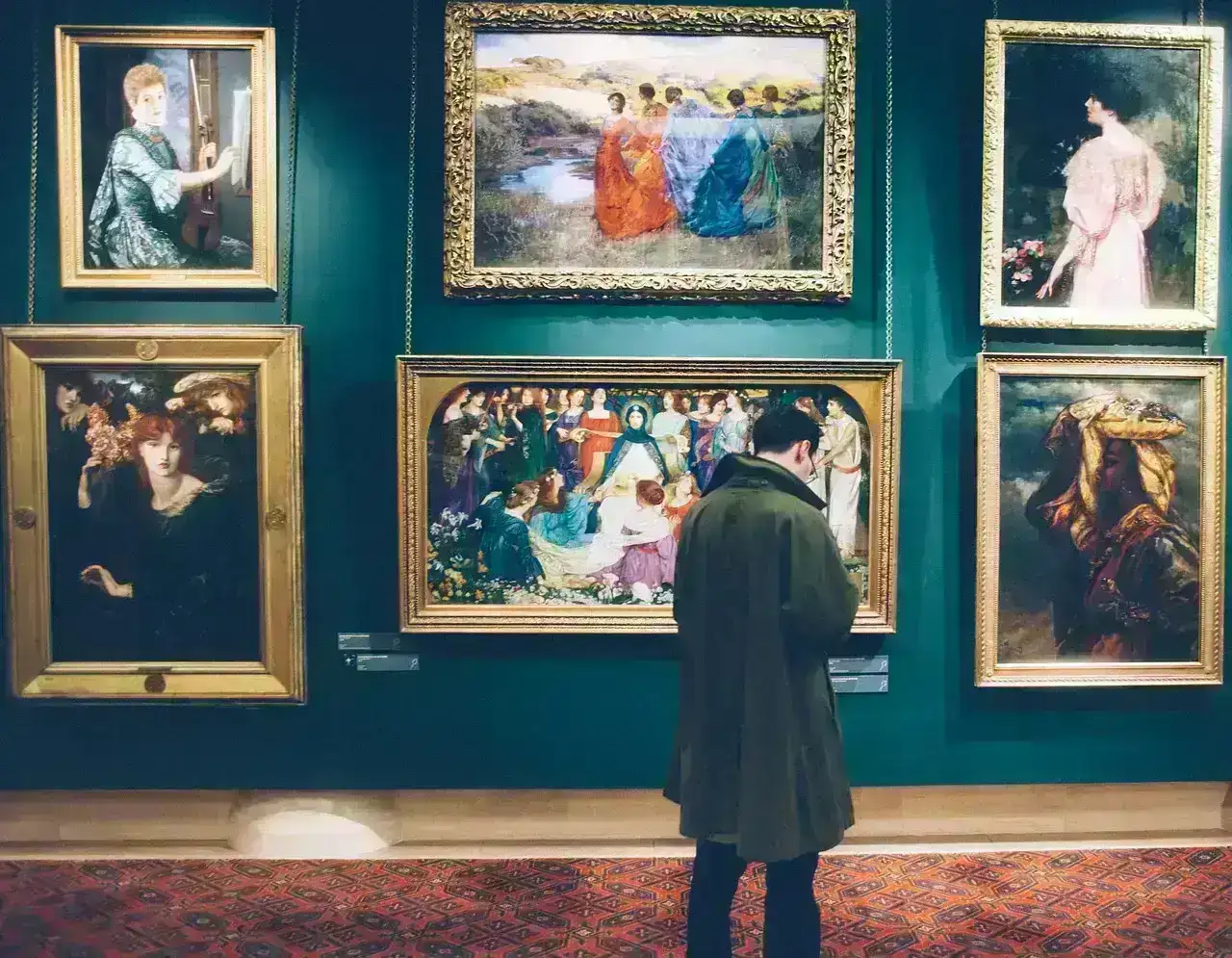
Published: | Last Updated:
Becoming an artist
Becoming an Artist and Establishing a Successful Career as a Professional Painter
Becoming an artist and establishing a successful career as a professional painter without attending art school is entirely feasible with dedication, persistence, and strategic planning. Here's a guide on how to pursue your passion for art and turn it into a sustainable career:how to Become an Artist Without Going to Art School
Many aspiring artists believe that attending art school is the only path to success in the art world. However, there are numerous alternative routes to pursuing a career in art without formal education. Here's a comprehensive guide on how to become an artist without going to art school:- Self-Education: Take advantage of the wealth of resources available online and in libraries to educate yourself about art history, techniques, and theory. Study the works of master artists and explore various mediums and styles to develop your skills.
- Practice Regularly: Dedicate time each day to hone your craft through consistent practice. Experiment with different techniques, subjects, and styles to discover your unique artistic voice.
- Seek Mentorship: Connect with established artists in your community or online who can provide guidance, feedback, and support. Learning from experienced artists can offer invaluable insights and help you navigate the art world.
- Attend Workshops and Classes: While you may not attend art school, consider enrolling in workshops, classes, or artist residencies to gain hands-on experience and learn from professionals in a more informal setting.
- Build a Portfolio: Compile a portfolio of your best work to showcase your skills and artistic style to potential clients, galleries, and collaborators. Continuously update and refine your portfolio as you progress in your artistic journey.
- Network: Attend art exhibitions, gallery openings, and networking events to connect with other artists, collectors, and industry professionals. Building relationships within the art community can lead to opportunities for collaboration, exhibitions, and sales.
- Promote Your Work: Utilize social media , artist websites, and online marketplaces to showcase and sell your art. Develop a strong online presence and engage with your audience to attract potential buyers and collectors.
- Stay Persistent: Becoming a successful artist requires patience, perseverance, and resilience. Embrace failure as a learning opportunity and continue to push yourself to grow and evolve as an artist.
How to Become a Professional Painter Artist
Becoming a professional painter artist requires talent, dedication, and strategic planning. Here's a comprehensive guide on how to pursue a career as a professional painter artist: 1. Develop Your Skills: Dedicate time to developing your painting skills through regular practice and experimentation. Experiment with different mediums, techniques, and styles to find your unique artistic voice. 2. Study Art History: Familiarize yourself with the works of master painters and art movements throughout history. Understanding the evolution of art can provide inspiration and insight into your creative process. 3. Create a Body of Work: Build a portfolio of your paintings that showcases your talent, style, and versatility as an artist. Aim to create a cohesive body of work that reflects your artistic vision and resonates with viewers. 4. Seek Feedback: Solicit feedback from peers, mentors, and art professionals to gain valuable insights and improve your work. Constructive criticism can help you identify areas for growth and refinement in your painting practice. 5. Enter Juried Exhibitions: Submit your work to juried exhibitions, art competitions, and gallery shows to gain exposure and recognition within the art community. Winning awards or securing gallery representation can enhance your credibility as a professional artist. 6. Build an Online Presence: Create a professional website and utilize social media platforms to showcase your paintings and engage with potential buyers and collectors. Regularly update your online portfolio with new work and behind-the-scenes content to attract followers and clients. 7. Network: Attend art events, gallery openings, and networking functions to connect with other artists, collectors, and industry professionals. Building relationships within the art community can lead to opportunities for exhibitions, collaborations, and sales. 8. Market Your Work: Develop a marketing strategy to promote your paintings and reach a wider audience. Consider participating in art fairs, hosting open studio events, or partnering with galleries and art dealers to increase visibility and sales. 9. Price Your Work Appropriately: Research market trends and comparable sales to determine fair and competitive prices for your paintings. Consider factors such as size, medium, complexity, and your level of experience when setting prices. 10. Stay Committed: Building a career as a professional painter artist requires dedication, perseverance, and a willingness to take risks. Stay committed to your artistic vision, continue to refine your skills, and seize opportunities for growth and advancement in your career. While the path to becoming a professional painter artist may be challenging, with passion, perseverance, and strategic planning, you can turn your artistic talent into a successful and fulfilling career.Can an Artist Make a Living Out of Art?
The idea of making a living off of art is a dream for many creative individuals, but it can also seem like an unattainable goal. However, with dedication, perseverance, and strategic planning, it is indeed possible to earn a sustainable income from your art. Here's a comprehensive guide on how to make a living off of your art:- Diversify Your Income Streams: Explore various avenues for monetizing your art, including selling original artwork, prints, and merchandise, licensing your designs, teaching art classes or workshops, and accepting commissions. Diversifying your income streams can help you weather fluctuations in the market and increase your earning potential.
- Build Your Brand: Develop a strong personal brand that reflects your unique artistic style, values, and story. Consistently communicate your brand message across all marketing channels, including your website, social media profiles, and promotional materials.
- Market Your Art: Invest time and effort into marketing your art to attract potential buyers and collectors. Utilize social media platforms, artist websites, online marketplaces, and art galleries to showcase your work and engage with your audience. Collaborate with influencers, participate in art events and exhibitions, and seek press coverage to increase visibility and reach new audiences.
- Price Your Art Thoughtfully: Determine fair and competitive prices for your artwork based on factors such as size, medium, complexity, and your level of experience. Consider offering a range of price points to accommodate different budgets and attract a broader audience.
- Manage Your Finances: Keep track of your income and expenses, maintain organized records, and develop a budget to ensure financial stability and sustainability. Set aside funds for business expenses, taxes, and savings to prepare for unexpected expenses and plan for future growth.
- Network and Collaborate: Build relationships within the art community, and collaborate with other artists, galleries, art dealers, and industry professionals to expand your network and create opportunities for exposure and collaboration. Networking can lead to partnerships, exhibitions, commissions, and other income-generating opportunities.
- Stay Resilient: Making a living off of art requires resilience, patience, and perseverance. Embrace rejection as part of the creative process, learn from setbacks, and stay focused on your long-term goals. Stay adaptable and open to new opportunities, and be willing to pivot your approach as needed to navigate challenges and capitalize on emerging trends.
- Continuously Improve Your Craft: Invest in ongoing education, skill development, and creative experimentation to evolve as an artist and stay relevant in the ever-changing art market. Seek feedback from peers, mentors, and art professionals, and be open to constructive criticism to push your artistic boundaries and refine your skills.
How Do Artists Make Money from Art?
Artists employ various strategies to monetize their creativity and generate income from their art. While selling original artwork is the most obvious way, there are several other avenues through which artists can make money from their craft. Here's a comprehensive overview of how artists make money from art:- Selling Original Artwork: Artists can sell their original paintings, drawings, sculptures, and other artworks directly to collectors, galleries, art dealers, and buyers through exhibitions, art fairs, online marketplaces, and studio sales.
- Selling Prints and Reproductions: Artists can reproduce their original artwork as prints, posters, greeting cards, and other merchandise to sell to a wider audience at a lower price point. Print-on-demand services and online platforms make it easy for artists to produce and sell high-quality reproductions of their artwork.
- Licensing Artwork: Artists can license their artwork to companies, brands, and individuals for use on products, packaging, advertising, and other commercial purposes. Licensing agreements typically involve royalties or a one-time payment in exchange for the right to use the artwork for a specified period and purpose.
- Accepting Commissions: Artists can accept commissions from clients to create custom artwork based on their specific requirements, such as portraits, landscapes, illustrations, murals, and installations. Commissioned work often commands higher prices and provides artists with a steady source of income.
- Teaching Art Classes and Workshops: Artists can share their knowledge and expertise by teaching art classes, workshops, and private lessons to students of all ages and skill levels. Teaching can be conducted in-person or online and provides artists with a consistent source of income while helping to cultivate the next generation of artists.
- Participating in Artist Residencies: Artists can apply for artist residency programs that provide them with studio space, accommodation, and sometimes stipends or grants to focus on their creative practice. Artist residencies offer opportunities for artists to collaborate, experiment, and create new work while receiving financial support.
- Collaborating with Brands and Businesses: Artists can collaborate with brands, businesses, and organizations on creative projects, such as advertising campaigns, product collaborations, events, and installations. Collaborations can provide exposure, networking opportunities, and financial compensation for artists.
- Writing and Speaking Engagements: Artists can leverage their expertise and experience to write articles, books, and blog posts about art and creativity or to speak at conferences, seminars, and events. Writing and speaking engagements can generate additional income and raise the artist's profile within the art community.
- Crowdfunding and Patreon: Artists can raise funds for their projects and creative endeavours through crowdfunding platforms like Kickstarter, Indiegogo, and Patreon. Crowdfunding campaigns allow artists to solicit financial support from their fans, followers, and patrons in exchange for rewards, exclusive content, and experiences.
- Grants, Fellowships, and Awards: Artists can apply for grants, fellowships, residencies, and awards from government agencies, arts organizations, foundations, and institutions to receive financial support, recognition, and opportunities for professional development and exposure.
How Can an Artist Turn Art Into a Career?
Turning your art into a career requires a combination of creativity, business acumen, and strategic planning. While pursuing a career in the arts can be challenging, with dedication and perseverance, it is possible to build a successful and fulfilling career as an artist. Here's a comprehensive guide on how to turn your art into a career:- Define Your Goals: Clarify your artistic goals, aspirations, and vision for your career. Determine what success looks like to you and identify the steps needed to achieve your objectives.
- Develop Your Craft: Dedicate time to honing your artistic skills and developing your unique artistic style. Experiment with different mediums, techniques, and subjects to discover what resonates with you and sets you apart as an artist.
- Build Your Portfolio: Create a professional portfolio that showcases your best and most representative work. Include a variety of pieces that demonstrate your range, skill level, and artistic vision.
- Identify Your Audience: Define your target audience and market segment based on demographics, interests, and preferences. Tailor your artistic style, messaging, and marketing efforts to appeal to your target audience.
- Establish Your Brand: Develop a strong personal brand that reflects your artistic style, values, and identity. Consistently communicate your brand message across all touchpoints, including your artwork, website, social media profiles, and promotional materials.
- Market Your Art: Invest time and effort into marketing your art to attract potential buyers, collectors, and patrons. Utilize social media platforms, artist websites, online galleries, art fairs, exhibitions, and networking events to showcase your work and connect with your audience.
- Network: Build relationships with other artists, gallery owners, art collectors, curators, and industry professionals to expand your network and create opportunities for collaboration, exhibitions, sales, and exposure.
- Price Your Art Thoughtfully: Determine fair and competitive prices for your artwork based on factors such as size, medium, complexity, and your level of experience. Consider the value of your time, materials, and creative vision when setting prices.
- Diversify Your Income Streams: Explore various avenues for monetizing your art, including selling original artwork, prints, and merchandise, licensing your designs, teaching art classes or workshops, and accepting commissions. Diversifying your income streams can help you generate steady revenue and mitigate risks.
- Stay Committed: Building a career as an artist requires patience, perseverance, and resilience. Stay committed to your artistic vision, continue to refine your skills, and seize opportunities for growth and advancement in your career.
How Long Does It take to Make a Living from Art?
The timeline for making a living from art varies greatly depending on various factors such as your skill level, dedication, market demand, networking abilities, and the overall state-of-the-art market. While some artists may achieve financial success relatively quickly, for others, it may take several years of consistent effort and strategic planning. Here's a comprehensive overview of the factors that influence the timeline for making a living from art:- Skill Development: Building a successful career in art often requires honing your craft over time. Depending on your starting skill level and the complexity of your chosen medium, it may take months or even years of dedicated practice to develop the proficiency and mastery needed to create high-quality artwork that resonates with buyers and collectors.
- Market Demand: The demand for your art and the overall state-of-the-art market can significantly impact how quickly you can make a living from your art. If there is high demand for your style or subject matter, you may be able to attract buyers and generate income more quickly. Conversely, if the market is saturated or experiencing a downturn, it may take longer to gain traction and build a customer base.
- Networking and Exposure: Building relationships within the art community and establishing a strong online and offline presence can accelerate your path to making a living from art. Networking with other artists, gallery owners, collectors, and industry professionals can lead to opportunities for exhibitions, collaborations, sales, and exposure that can help you gain recognition and generate income.
- Marketing and Promotion: Effective marketing and promotion are essential for attracting buyers and generating sales. Investing time and resources into promoting your art through social media, artist websites, online galleries, art fairs, exhibitions, and networking events can increase your visibility and reach new audiences, potentially speeding up the process of making a living from your art.
- Persistence and Resilience: Building a sustainable art career requires persistence, resilience, and a willingness to persevere in the face of challenges and setbacks. It's essential to stay committed to your artistic vision, continue to refine your skills, and adapt your approach as needed to navigate the ups and downs of the art market.
- Diversifying Income Streams: Diversifying your income streams by exploring various avenues for monetizing your art, such as selling original artwork, prints, merchandise, licensing your designs, teaching art classes, and accepting commissions, can help you generate steady revenue and achieve financial stability more quickly.
Recommended for You
You Might Enjoy

How to Use AI for Content Marketing in 2025: A Step-by-Step Guide for Beginners
Content marketing has always been about delivering the right message to the right audience at the…
The Ultimate Guide to Choosing the Perfect Hosting Service Provider
Choosing the Perfect Hosting Service Provider Selecting the right hosting service provider is…
MLM Gateway review 2025
If You Are an MLM Person, Welcome to this MLM Gateway Review 2024 Welcome to this MLM Gateway…More Reads You’ll Love

7 Trending Colours for House Interiors
7 Trending Colours for House Interiors: A Comprehensive Guide for Your Next Painting Project If…
🔥 Dating App Disasters: The Funniest Meme
Themes from Tinder to Bumble Modern romance doesn't start with a candlelit dinner anymore -- it…
Table of Contents and Their Impact on Your Blog
The Ultimate Guide to SEO-Friendly Content: Tables, Table of Contents, and Their Impact on Your…Other Topics That Might Interest You

The Secret to Succeeding in Online Entrepreneurship
How to Launch Your Journey into Online Entrepreneurship Embarking on the path of online…
Significance of Link Building
Power Of Link Building The Significance of Link Building: Unveiling the Path to Online Success. The…
Making a Living as an Artist
Before Talking about Making a Living as an Artist, Let's First Look into the Art Business The art…Traffic Coop Earnings
Ready to Monetise Your Traffic?
Stop letting your visitors slip away without value. With the LeadsLeap Co-op, you can turn every click into income. Join through my link below and I’ll personally share my tips for getting started fast.
🚀 Join My LeadsLeap Co-op Now*Referral disclosure: I may earn a commission when you sign up through this link. There’s no extra cost to you — your support helps keep this site alive.






Comments